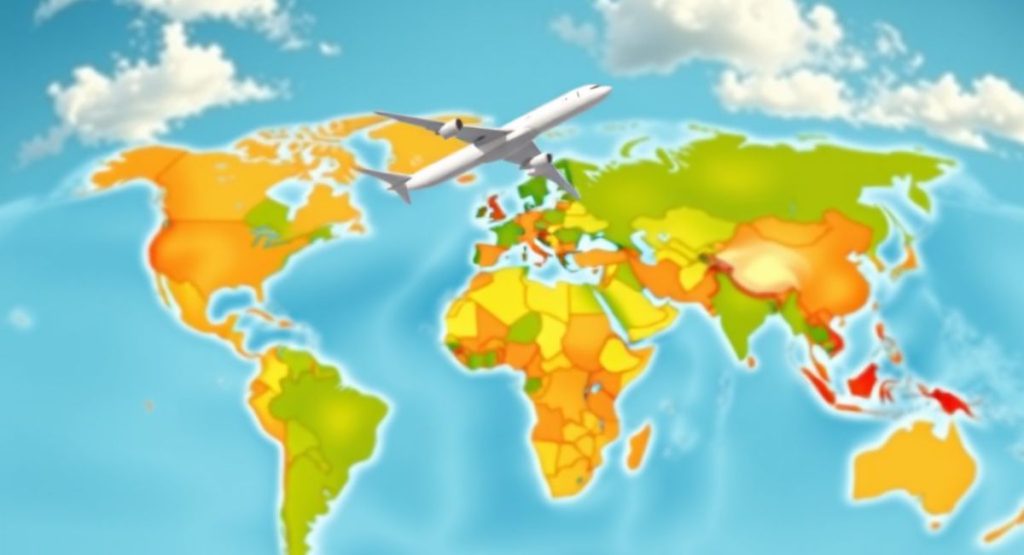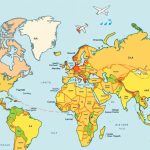Traveling to India can be one of the most rewarding experiences of your life, filled with vibrant cultures, ancient history, and breathtaking landscapes. However, before you can embark on this journey, it’s crucial to understand the visa requirements and prepare accordingly. This blog post will provide you with an essential checklist for obtaining an Indian visa, ensuring a smooth and successful application process.
Understanding the Types of Indian Visas
The first step in your journey is to understand the different types of visas available for travelers to India. India offers several visa categories, each tailored to specific purposes. The most common types include tourist visas, business visas, student visas, and employment visas. Indian Business Visa.
Tourist visas are ideal for those visiting India for leisure and exploration. They typically allow for stays ranging from 30 days to six months, depending on your nationality and the specifics of the visa. Business visas are intended for individuals traveling for professional purposes, such as meetings or conferences. If you plan to study in India, you will need a student visa, which requires acceptance from a recognized educational institution. Employment visas, on the other hand, are necessary for individuals who have secured a job offer from an Indian company.
Identifying the appropriate visa type is essential, as each category has its own requirements and processing times.
The Visa Application Process
Once you have determined the type of visa you need, the next step is to navigate the application process. The application procedure may vary depending on your nationality and the specific visa type you require. Generally, the process involves completing an online application form, paying the requisite visa fee, and submitting supporting documents.
The online application form will ask for basic personal information, travel plans, and the purpose of your visit. It is vital to fill this form out accurately and carefully, as any discrepancies can lead to delays or even rejections. After submitting the form, you will receive a confirmation receipt, which you should keep for your records.
Visa fees vary based on the type of visa and your nationality. Payments are usually made online via credit or debit cards, so ensure you check the official Indian visa website for accurate fee details to avoid any surprises.
Required Documents for Visa Application
Gathering the necessary documentation is a critical step in the visa application process. While requirements may differ based on the visa type, there are several documents that are commonly required for most applications. Indian Visa Application for Tourist Visa.
A valid passport is the most important document; it should have at least six months of validity beyond your intended stay in India and a minimum of two blank pages for visa stamps. Additionally, passport-sized photographs that meet specific requirements, such as dimensions and background color, are typically required.
Other essential documents include a travel itinerary, proof of accommodation (for instance, hotel bookings), and financial statements that demonstrate your ability to support yourself during your stay. Depending on the type of visa you are applying for, additional documents may be necessary. For student visas, an admission letter from a recognized institution is required, while business visas may necessitate an invitation letter from an Indian company. Always consult the official guidelines for the most accurate and up-to-date information.
Processing Times and Planning Ahead
Understanding the processing times for your Indian visa application is crucial for effective travel planning. Generally, visa processing times can vary from a few days to several weeks, depending on factors such as the type of visa, the volume of applications, and your nationality.
For example, tourist visas are usually processed relatively quickly, often within a week, while employment visas might take longer due to additional scrutiny. To avoid any last-minute issues, it is advisable to apply for your visa well in advance of your intended travel date. This approach is especially important during peak travel seasons when processing times may increase due to a higher volume of applications.
Visa Validity and Extensions
Once you receive your Indian visa, it’s essential to understand its validity and any restrictions that may apply. Tourist visas generally allow stays of 30 days to six months, depending on your nationality and the specifics of your visa.
If you find yourself wanting to extend your stay in India, some visa types allow for extensions, while others do not. Tourist visas can sometimes be extended under special circumstances; however, this is not guaranteed and usually requires a visit to the Foreigners Regional Registration Office (FRRO). To avoid any legal complications, it is crucial to be aware of the latest regulations regarding visa extensions and ensure you comply with all requirements.
Health and Safety Precautions
Traveling to India involves certain health and safety considerations that you should address before your trip. It is wise to consult with a healthcare provider to check for any required vaccinations or health advisories before departure. Common vaccinations recommended for travelers to India include hepatitis A, typhoid, and tetanus. Depending on your travel plans and activities, additional vaccinations may be necessary.
Having travel insurance that covers medical emergencies is also advisable. Given that healthcare standards can vary, having insurance ensures you can access quality care if needed. Familiarizing yourself with local health facilities and emergency contact numbers is a prudent step in preparing for your journey.
Cultural Etiquette and Local Customs
India is a country rich in cultural diversity, and understanding local customs and etiquette can greatly enhance your travel experience. Dressing modestly is highly recommended, particularly when visiting religious sites. Asking for permission before taking photographs of people is also respectful and appreciated.
Learning a few basic phrases in Hindi or the local language can foster goodwill with locals and enrich your interactions. When it comes to transportation, familiarize yourself with local options, including trains, buses, and auto-rickshaws. While public transportation can be an adventure, consider using reputable taxi services or ride-sharing apps for convenience and safety.
Lastly, it is advisable to carry a copy of your visa and passport while traveling in India. Having these documents readily available can simplify interactions with authorities and accommodations.
Conclusion
Unlocking the treasures of India begins with understanding the visa application process and preparing accordingly. By following this essential Indian visa checklist, you will be well-equipped to navigate the requirements and enjoy a seamless travel experience. Take the time to research, gather the necessary documents, and plan ahead to ensure that your journey to India is not only memorable but also hassle-free. Embrace the vibrant culture, stunning landscapes, and warm hospitality that await you in this incredible country. Your adventure in India is just a visa away.



